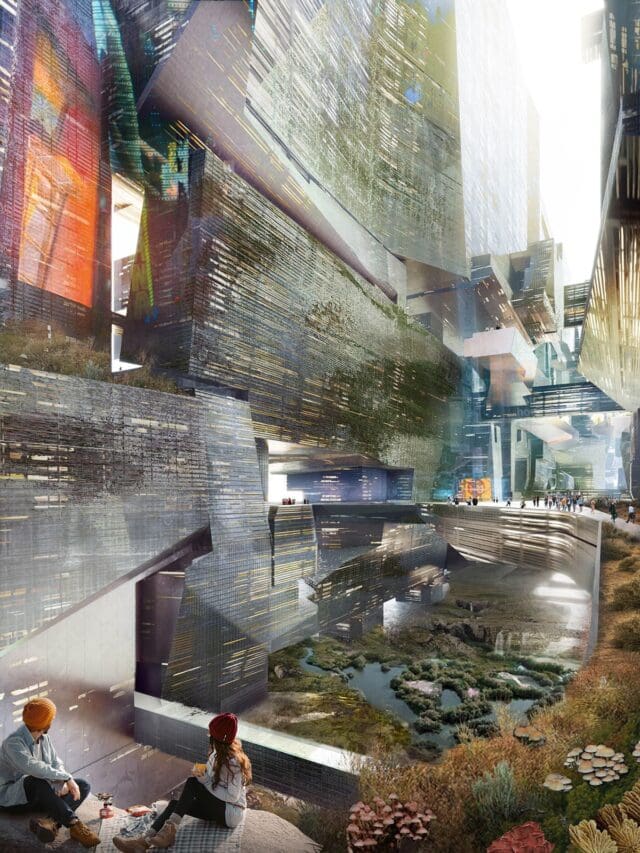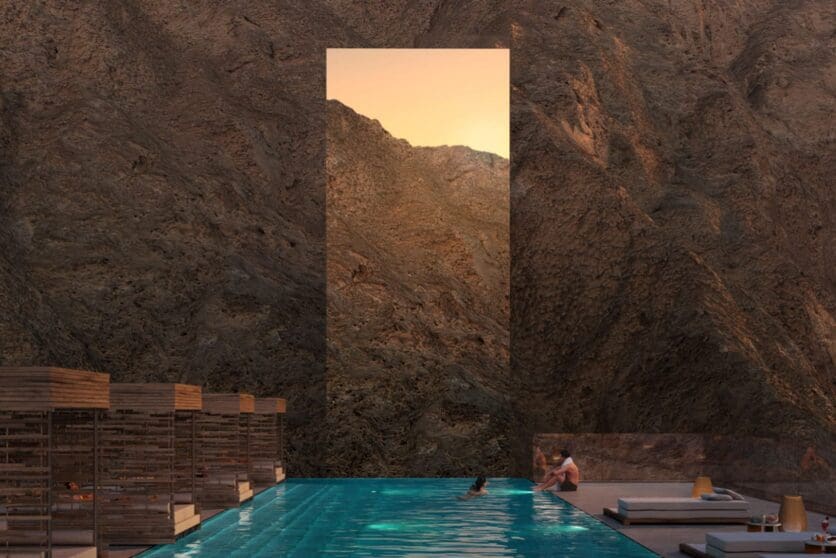
Neom, Saudi Arabia: A sci-fi dream or the city of the future?
Despite spiralling costs, missed deadlines and serious questions over its real-world feasibility, Saudi Arabia ploughs ahead with its $500 billion vision of the future
Technological progress has, in the grand, epoch-spanning scheme of things, raised living standards across the world in an astonishingly short space of time. In the span of 100 years, personal transport has gone from loud, unreliable motorised wagons to highly-efficient electric cars capable of travelling hundreds of miles on a single charge. In just 20 years, mobile phones have transformed from simple devices to handheld computers, complete with 4K video and AI capabilities. Improvements in medicine mean that we are living longer. Reliable supplies of water, food, electricity and, more recently, the internet, have made everyday life that much easier.
Yet not all progress has arrived without cost. The production of electric cars, for example, isn’t as green as manufacturers and governments would have you believe. Once on the road, there is no question that EVs are more environmentally friendly than combustion engines. But, according to a 2021 study by the Internetwork for Sustainability, electric cars create far more carbon emissions during their production than internal combustion vehicles. Then there’s the question of charging infrastructure, with many EV stations drawing their electricity from fossil fuel sources.
Similarly, mobile phones aren’t all good news, with links between social media and poor mental health, and the metal extraction used for production particularly harmful to the environment. Whenever something ground-breaking materialises, promising to revolutionise the way we live, there’s usually a caveat buried somewhere in the small print. And so to Neom, a giga-project of quite unfathomable proportions currently under construction in the Kingdom of Saudi Arabia.

Neom Saudi Arabia is quite sure that it will change the world. In various advertisements the project is described as a ‘civilisation revolution’ and ‘a new way of living’. It claims ‘the world needs Neom because the world needs change’. But since it was announced in 2017, the project has garnered more criticism than praise, with environmental concerns, possible human rights abuses and the simple, overriding question: ‘why?’
What, then, exactly is Neom? Read the marketing material and it’s easy to get confused. In essence, it will be a new urban environment built entirely from the ground up, encompassing a number of regions and cities within a 10,200 square mile radius, an area of desert larger than the size of Wales, which borders the Red Sea.
It’s one of the biggest talking points of Saudi Arabia’s Vision 2030 plan to diversify the country’s income away from oil. Mohammed bin Salman Al Saud, Saudi’s Crown Prince, is overseeing the project personally, with the idea to transform the country into a world leader in tourism, education and business. The Kingdom will draw upon the great wealth it has accumulated from oil to fund Neom, with $500 billion already committed to making the Crown Prince’s science-fiction-like dreams a reality.

Image: Neom

A CGI of how life might look inside The Line. Image: Neom
You’ve probably seen videos of what Neom Saudi Arabia will look like on Instagram or TikTok. Photos of a vast channel dug into the sand for Neom’s hero project, The Line, have gone viral. A 500m-high, 200m-wide, mirror-walled linear city, The Line will stretch arrow-straight for 170 kilometres through the desert. The city, which will be car free, has been designed to house nine million people within walkable communities, with all basic services reachable within a five-minute walking distance. Google ‘The Line’ and you could be forgiven for presuming the images and videos thrown up are the dystopian setting of some new Denis Villeneuve film. They are, in fact, real masterplans. Even more unbelievably, construction is well under way on making those CGIs a reality.
Building work has begun for Neom’s other districts, too, overseen, quite bemusingly, by a number of the world’s top architects and architectural firms. There’s Aquellum, an upside-down, subterranean skyscraper built into a mountain, designed by Name Architecture. Another is Trojena, a new ski resort located in the Tabuk mountains. It’s been designed by LAVA, Zaha Hadid Architects, UNStudio, Aedas, Mecanoo and Bureau Proberts.
Other projects include Norlana, a coastal port town, by 10 Design; Oxagon, an octagonal port city by Danish studio BIG; and Xaynor, a beach member’s club by Mexican studio Sordo Madaleno Arquitectos. Each project looks like a different take on a Bond villain lair, but it is The Line that is the most stupefying – a project so vast, complicated and otherworldly, that it’s hard to imagine it would be possible to build, even if anyone actually believed it was a good idea to do so.

Giles Pendleton, chief operating officer of The Line (formerly chief development officer of South African real estate investment fund, Attacq) has posted a series on LinkedIn titled ‘Neom is real’, almost to convince himself that the project is making headway. Denis Hickey, The Line’s chief development officer (previously of ING Real Estate) has claimed in a video uploaded to Neom’s official YouTube channel that “the first phase of The Line will be complete by 2030… We are committed”. A video advertisement released in February 2024 declares that “one of the most ambitious projects that the world has ever seen is progressing rapidly.”
At the time of writing, the foundations are, indeed, being laid, with 2,000 trucks reportedly working on the channel in which The Line will be built. Originally, the project was slated to be finished by 2025, before a new deadline of 2030 was proposed. Suspending disbelief, and assuming all goes to plan, what will The Line actually be like once it’s complete?
The city’s nine million residents will, supposedly, be able to travel from end to end in 20 minutes, although it’s not yet been explained how this will be possible. Many services will be autonomous, using artificial intelligence in one form or another. Energy and water supplies are said to be 100 per cent renewable, while the mirror glass façade is intended to work with and complement the surrounding landscape, in a similar fashion to the Maraya building in Saudi Arabia’s AlUla region.

While renderings of Neom are, undoubtedly, breath-taking, many of the design world’s foremost figures are sceptical. Marshall Brown, director of the Princeton Urban Imagination Center told architecture and design magazine Dezeen: “There would be so many physical and environmental phenomena that would have to be dealt with to achieve the incredible minimal and singular character that the renderings propose… These images project a degree of control which is very difficult to retain, especially over a period of time, even in a very autocratic society.”
Philip Oldfield, director of the architecture programme at the University of New South Wales, Sydney, also points towards the pragmatics. He told Dezeen: “Some of the internal spaces at The Line look incredibly alluring – lush atria, vast cavernous interior spaces Grand Canyon-esque in scale, with residents perched on the edge enjoying picnics. Even if these were built, the satisfaction of residents would mostly be informed by how such spaces are operated and managed, not how dramatic they look.”
He posed some important questions, which are yet to be answered. “What rules will be set?”, he asked. “Can visitors use all the spaces? Which are public, which are private? Will you really be allowed to have a picnic on a ledge above a 200-metre-high atrium? Call me a cynic, but I highly doubt it.”

There are more concrete, and serious, issues related to Neom. Celebrated British architect Sir Norman Foster was initially part of the advisory board for Neom when it was announced in 2017. But he resigned after the Saudi government was found responsible for the murder of journalist Jamal Khashoggi at the Saudi consulate in Istanbul in 2018. Sir Jonathan Ive, former chief design officer at Apple, was also originally listed as an advisor, but a week after Khashoggi’s murder, Apple claimed his inclusion on Neom’s list was a ‘mistake’.
On 2 October 2022, Saudi’s Specialised Criminal Court sentenced family members Shadli, Ataullah and Ibrahim Salih al-Huwaiti to death for opposing eviction to make way for Neom, according to ALQST, an independent organisation working to defend human rights in Saudi Arabia. Shadli is the brother of Abdul Rahim al-Huwaiti, who “was shot dead by security forces in April 2020… after he posted videos on social media opposing the displacement of local residents to make way for the project,” according to ALQST – a news story also reported by the BBC.
When the United Nations Human Rights Council issued a statement denouncing the planned executions, the Saudi government responded by claiming the men were being killed for their connection to Daesh and Al-Qaeda. The government also denied that any forcible relocations had taken place, stating that 6,360 individuals have so far been relocated, and fully compensated for doing so.
If, how and to what extent Neom Saudi Arabia will ever be realised remains unclear. So far, the project has been a story of awe, controversy and contradiction. A recent advertisement claimed that The Line will be a ‘a sustainable city with zero emissions’, and in the same sentence explained how ‘millions of cubic metres of earth and water are being moved per week’.
The only certainty is that Neom is intended to be a show of force and an exclamation of power. It demonstrates Saudi Arabia’s aspirations of becoming a leading nation. Just how seriously the sci-fi giga-project plays into those ambitions remains to be seen.
Read more: Unpacking art generated by artificial intelligence






